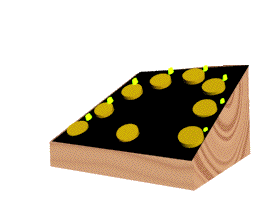Related Research Articles

Arthur Robert Jensen was an American psychologist and writer. He was a professor of educational psychology at the University of California, Berkeley. Jensen was known for his work in psychometrics and differential psychology, the study of how and why individuals differ behaviorally from one another.

An intelligence quotient (IQ) is a total score derived from a set of standardized tests or subtests designed to assess human intelligence. The abbreviation "IQ" was coined by the psychologist William Stern for the German term Intelligenzquotient, his term for a scoring method for intelligence tests at University of Breslau he advocated in a 1912 book.
Discussions of race and intelligence – specifically, claims of differences in intelligence along racial lines – have appeared in both popular science and academic research since the modern concept of race was first introduced. With the inception of IQ testing in the early 20th century, differences in average test performance between racial groups were observed, though these differences have fluctuated and in many cases steadily decreased over time. Further complicating the issue, modern science has shown race to be a social construct rather than a biological reality, and intelligence has no undisputed definition. The validity of IQ testing as a metric for human intelligence is itself disputed. Today, the scientific consensus is that genetics does not explain differences in IQ test performance between groups, and that observed differences are therefore environmental in origin.

Human intelligence is the intellectual capability of humans, which is marked by complex cognitive feats and high levels of motivation and self-awareness. High intelligence is associated with better outcomes in life.
The g factor is a construct developed in psychometric investigations of cognitive abilities and human intelligence. It is a variable that summarizes positive correlations among different cognitive tasks, reflecting the fact that an individual's performance on one type of cognitive task tends to be comparable to that person's performance on other kinds of cognitive tasks. The g factor typically accounts for 40 to 50 percent of the between-individual performance differences on a given cognitive test, and composite scores based on many tests are frequently regarded as estimates of individuals' standing on the g factor. The terms IQ, general intelligence, general cognitive ability, general mental ability, and simply intelligence are often used interchangeably to refer to this common core shared by cognitive tests. The g factor targets a particular measure of general intelligence.
Intelligence has been defined in many ways: the capacity for abstraction, logic, understanding, self-awareness, learning, emotional knowledge, reasoning, planning, creativity, critical thinking, and problem-solving. More generally, it can be described as the ability to perceive or infer information, and to retain it as knowledge to be applied towards adaptive behaviors within an environment or context.
The Triarchic Theory of Intelligence or Three Forms of Intelligence, formulated by psychometrician Robert Sternberg, aims to go against the psychometric approach to intelligence and take a more cognitive approach, which leaves it to the category of the cognitive-contextual theories. The three meta components are also called triarchic components.

The g Factor: The Science of Mental Ability is a 1998 book by psychologist Arthur Jensen about the general factor of human mental ability, or g.
The Minnesota Transracial Adoption Study examined the IQ test scores of 130 black or interracial children adopted by advantaged white families. The aim of the study was to determine the contribution of environmental and genetic factors to the poor performance of black children on IQ tests as compared to white children. The initial study was published in 1976 by Sandra Scarr and Richard A. Weinberg. A follow-up study was published in 1992 by Richard Weinberg, Sandra Scarr and Irwin D. Waldman. Another related study investigating social adjustment in a subsample of the adopted black children was published in 1996. The 1992 follow-up study found that "social environment maintains a dominant role in determining the average IQ level of black and interracial children and that both social and genetic variables contribute to individual variations among them."

Mental chronometry is the scientific study of processing speed or reaction time on cognitive tasks to infer the content, duration, and temporal sequencing of mental operations. Reaction time is measured by the elapsed time between stimulus onset and an individual’s response on elementary cognitive tasks (ETCs), which are relatively simple perceptual-motor tasks typically administered in a laboratory setting. Mental chronometry is one of the core methodological paradigms of human experimental, cognitive, and differential psychology, but is also commonly analyzed in psychophysiology, cognitive neuroscience, and behavioral neuroscience to help elucidate the biological mechanisms underlying perception, attention, and decision-making in humans and other species.

"Mainstream Science on Intelligence" was a public statement issued by a group of researchers of topics associated with intelligence testing. It was published originally in The Wall Street Journal on December 13, 1994, as a response to criticism of the book The Bell Curve by Richard Herrnstein and Charles Murray, which appeared earlier the same year. The statement defended Herrnstein and Murray's controversial claims about race and intelligence.

The Cattell–Horn–Carroll theory, is a psychological theory on the structure of human cognitive abilities. Based on the work of three psychologists, Raymond B. Cattell, John L. Horn and John B. Carroll, the Cattell–Horn–Carroll theory is regarded as an important theory in the study of human intelligence. Based on a large body of research, spanning over 70 years, Carroll's Three Stratum theory was developed using the psychometric approach, the objective measurement of individual differences in abilities, and the application of factor analysis, a statistical technique which uncovers relationships between variables and the underlying structure of concepts such as 'intelligence'. The psychometric approach has consistently facilitated the development of reliable and valid measurement tools and continues to dominate the field of intelligence research.
Timothy C. Bates is a professor of individual differences in psychology at the University of Edinburgh. His current research interests include the genetics of reading and spelling, intelligence, and personality.
Inspection time refers to the exposure duration required for a human subject to reliably identify a simple stimulus. Typically a stimulus made up of two parallel lines differing in length and joined at the tops by a cross bar is presented. The ability to quickly detect the identity of a stimulus is moderately heritable and correlates with the subject's IQ.

The Jensen box was developed by University of California, Berkeley psychologist Arthur Jensen as an experimental apparatus for measuring choice reaction time (RT) and individual differences in intelligence.
The following outline is provided as an overview of and topical guide to human intelligence:

The Odd-Man-Out Reaction Time test is a test of reaction times that uses Arthur Jensen's testing apparatus, the Jensen box. The box is normally used for measuring choice reaction times in which the participant in the experiment is tested on their ability to recognize which of the eight lights of the Jensen box is illuminated, as quickly as possible. However, in the Odd Man Out Reaction Time test, three lights are illuminated in each trial. Two are close together and the other further apart; the individual being tested must identify this third light.
Neuroimaging intelligence testing concerns the use of neuroimaging techniques to evaluate human intelligence. Neuroimaging technology has advanced such that scientists hope to use neuroimaging increasingly for investigations of brain function related to IQ.
Wendy Johnson is an American differential psychologist and professor of psychology at the University of Edinburgh. She holds the Chair in Differential Development in the Department of Psychology and Centre for Cognitive Ageing and Cognitive Epidemiology at the University of Edinburgh.
Jensenism is a term coined by New York Times writer Lee Edson. Named after educational psychologist Arthur Jensen, it was originally defined as "the theory that IQ is largely determined by the genes". The term was coined after Jensen published the article "How Much Can We Boost IQ and Scholastic Achievement?" in the Harvard Educational Review in 1969. It has since been included in several dictionaries.
References
- ↑ Human Cognitive Abilities: A Survey of Factor-Analytic Studies By John Bissell Carroll 1993 Cambridge University Press ISBN 0-521-38712-4 p11
- 1 2 Hunt, Earl B. (2011). Human intelligence. Cambridge: Cambridge University Press. p. 142. ISBN 9780521881623. OCLC 567165797.
- ↑ Haier, Richard J. (2016-12-28). The neuroscience of intelligence. New York, NY. p. 227. ISBN 9781107089778. OCLC 951742581.
- ↑ Arthur R. Jensen Process differences and individual differences in some cognitive tasks Intelligence, Volume 11, Issue 2, April–June 1987, Pages 107-136
- ↑ J. Grudnik and J. Kranzler, Meta-analysis of the relationship between intelligence and inspection time, Intelligence 29 (2001), pp. 523–535.
- ↑ Luo, D (June 1999). "Elementary cognitive tasks and their roles in g estimates". Intelligence. 27 (2): 157–174. doi:10.1016/S0160-2896(99)00020-3.
- 1 2 Jensen, Arthur R. (2006). Clocking the Mind : Mental Chronometry and Individual Differences . Burlington: Elsevier. pp. 175. ISBN 9780080463728. OCLC 437173754.
- ↑ Luo, Dasen; Thompson, Lee A; Detterman, Douglas K (January 2003). "The causal factor underlying the correlation between psychometric g and scholastic performance". Intelligence. 31 (1): 67–83. doi:10.1016/S0160-2896(02)00113-7.
- ↑ Nettelbeck, Ted (January 1998). "Jensen's chronometric research: Neither simple nor sufficient but a good place to start". Intelligence. 26 (3): 233–241. doi:10.1016/S0160-2896(99)80006-3.
- ↑ Colonius, Hans; Díaz, José A.; Wong, Willy; Medina, José M. (2015). "Advances in modern mental chronometry". Frontiers in Human Neuroscience. 9: 256. doi: 10.3389/fnhum.2015.00256 . ISSN 1662-5161. PMC 4422014 . PMID 25999843.
- ↑ Carroll, John B. (1980). Individual Difference Relations in Psychometric and Experimental Cognitive Tasks. Chapel Hill, N.C.: University of North Carolina.
- ↑ Roger W. Russell, ed. (1990). Behavioral Measures of Neurotoxicity: Report of a Symposium. Pamela Ebert Flattau, Andrew MacPherson Pope. National Academies Press. ISBN 0-309-04047-7.